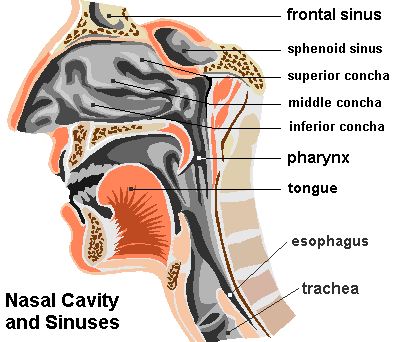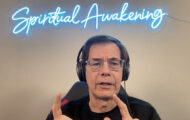THE BENEFITS OF NASAL BREATHING
Happy Friday to You!
I hope you are all ready for a weekend of unbound play and celebrating life.
I had a very busy, but productive day yesterday. I’m pretty much ready for my trip now and I’m excited to share my new presentations with my students along the way.
I’m getting wiser as I age and feel at peace with the fact that I’m better than ever at teaching complex concepts simply enough that most anyone in my audience can gain some practical tips to be used immediately.
One little tip used well is better than a head full of information used incorrectly! I’m looking forward to sharing that with people.
I got into the gym for my first good heavy deadlift session in a while. I’ve been so busy lately that my brain has left my body feeling too depleted to life heavy weights safely and effectively.
When I feel like that, I always back the load/intensity down to where it feels therapeutic to me. That may be one reason I’ve had very few weight training or sports conditioning injuries in my life.
I worked my way up progressively in a pyramid fashion until I hit 405 pounds for box deadlifts. I then worked my way down the other side of the pyramid and coupled each set of deadlifts with reptilian crawling.
Vidya fed Rory and I GREAT food as usual.
THE BENEFITS OF NASAL BREATHING
It is normal and natural to inhale and exhale through your nose when not under physical or mental/emotional stress.
As you can see in the image above, inside your nose are passages called “turbinates”. Turbinates spin, moisten and clean the air before getting to your lungs.
If you breath through your mouth, then your mouth becomes your air filter and instead of having buggers in your nose, you end up with bugger mouth; don’t be surprised if no one wants to kiss you!
The turbinates are well endowed with nerve endings that stimulate the parasympathetic nervous system; that’s the digest, growth, repair and eliminate branch of the nervous system.
When we breath through our mouth for very long at all, elevate sympathetic tone. This means elevated stress hormones, hyperactive behavior, and over time, immune suppression!
If you can’t breath though your nose well, it is very likely because your nasal passages are blocked by phlegm (snot!).
This is a very common reaction to eating foods that you have an intolerance to, are allergic to, or are eating too much of.
The most common causes of snotty noses and mouth breathing in this regard is eating dairy, processed sugar, and gluten containing gains.
If you have a hard time breathing through your nose, I’d recommend taking these items out of your diet for one week and see if your breathing improves.
If not, you may have structural growth and development deficiencies that commonly result when one or both parents were malnourished at the time of your conception.
If your face isn’t balanced with three equal thirds (forehead-nose-below nose to end of chin), you are very likely to be one of the people with this common growth and development disorder.
If you are, then it is even more essential that you keep your diet clean. If you don’t, you are much more susceptible to a variety of dental hygiene problems, chronic illnesses, poor concentration, and a wide variety of other pestilent problems.
A great yoga exercise you can use to help balance your autonomic nervous system and improve brain function is called alternate nostril breathing.
I’d recommend doing it for at least three minutes each morning, noon and night, or anytime you need better mental clarity.
The following exercise can also stabilize emotions effectively in a short time.
Standing or sitting with good posture, plug one nostril and inhale, then exhale through it.
After completing the cycle of inhalation followed by exhalation, switch sides. Continue this for at least three minutes.
If you would like to learn a variety of other such easy, effective exercises, you can learn about “zone exercises” in my book How To Eat, Move and Be Healthy!
If you have structural damage to your nose from injury (common in contact sports), such as a deviated septum, that can cause a variety of niggling problems as well.
If your septum is deviated, or your nasal passages are blocked by polyps or other blocking factors, you can test to see if it’s worth having an Ear, Nose and Throat specialist evaluate you by assessing how much air flows through each nostril.
A normal person’s airflow should be within 10% from left to right nostril.
If you can’t gauge it effectively, you can by a device called a “nasal spirometer” from some drug stores.
It will give you a flow reading on each nostril. If one nasal passage is more than 10% reduced in flow relative to the other, I’d suggest you get a professional medical evaluation.
Getting the nasal problem fixed could be more cheaper in the long run than dealing with the wide variety of problems that are likely to result from the imbalance.
I hope you all have a great weekend. Today is Rory’s last day here with us and so we are off to get our massages and take a steam, then home for an afternoon of rest in the yard.
Vidya and I leave for NY early Sunday morning. We’ll meet up with JP Sears who will be finishing HLC1 for dinner.
Then, I’ll be teaching HLC2 Tuesday-Saturday to a great group of students, many who are coming from other countries around the world. That will be really fun to share!
It may be a little challenging for me to put up regular blogs while on the road for the next month, but I’ll do my best to share with you!
Love and chi,
Paul Chek















Find me on the web